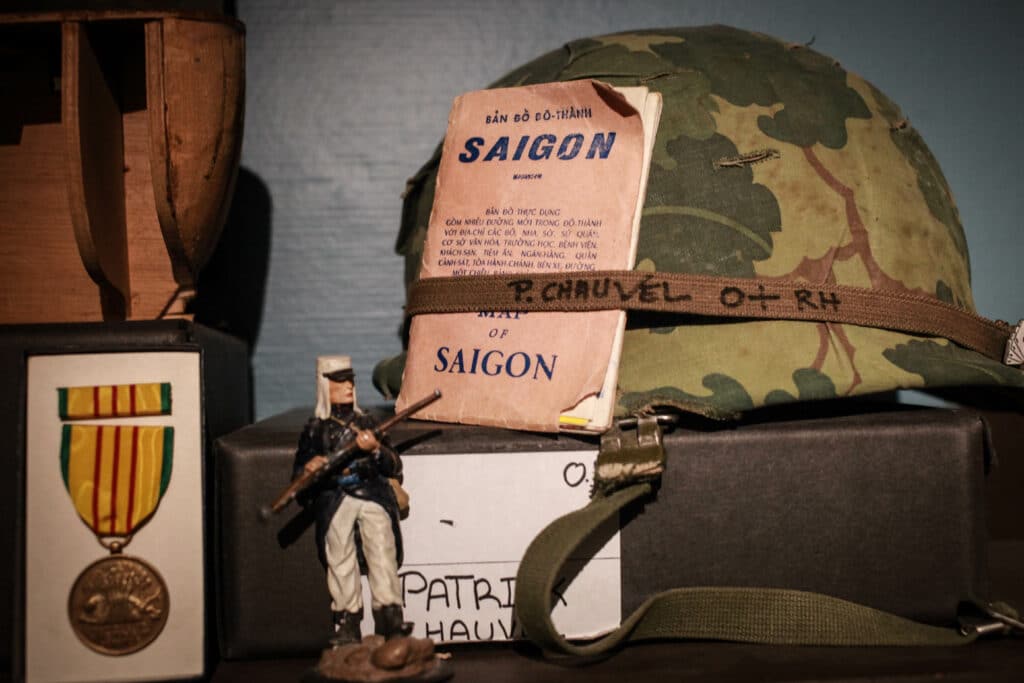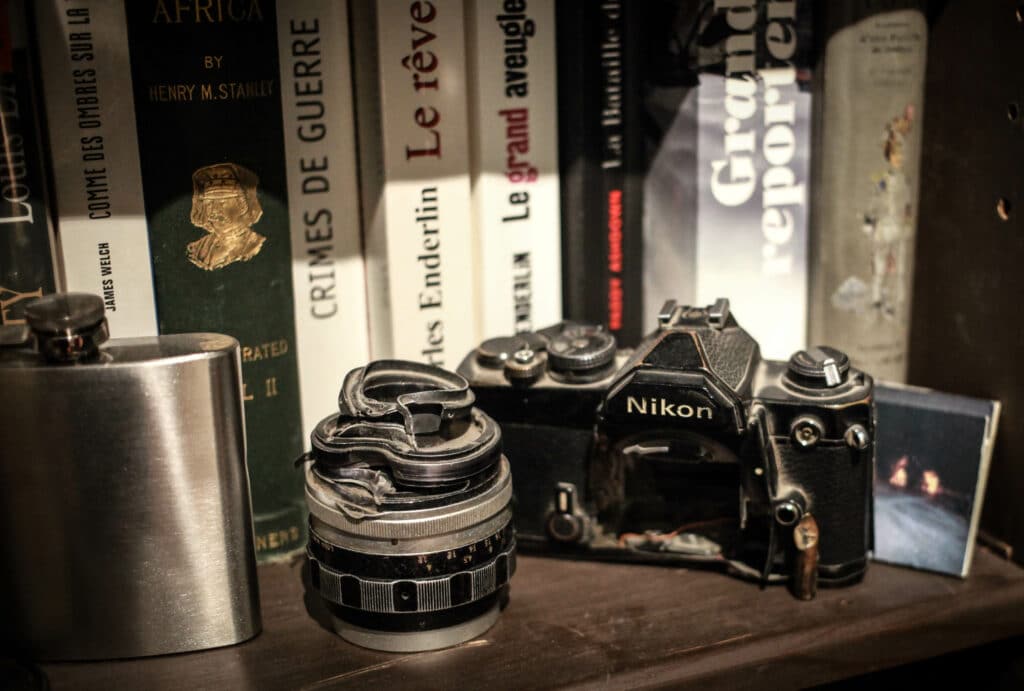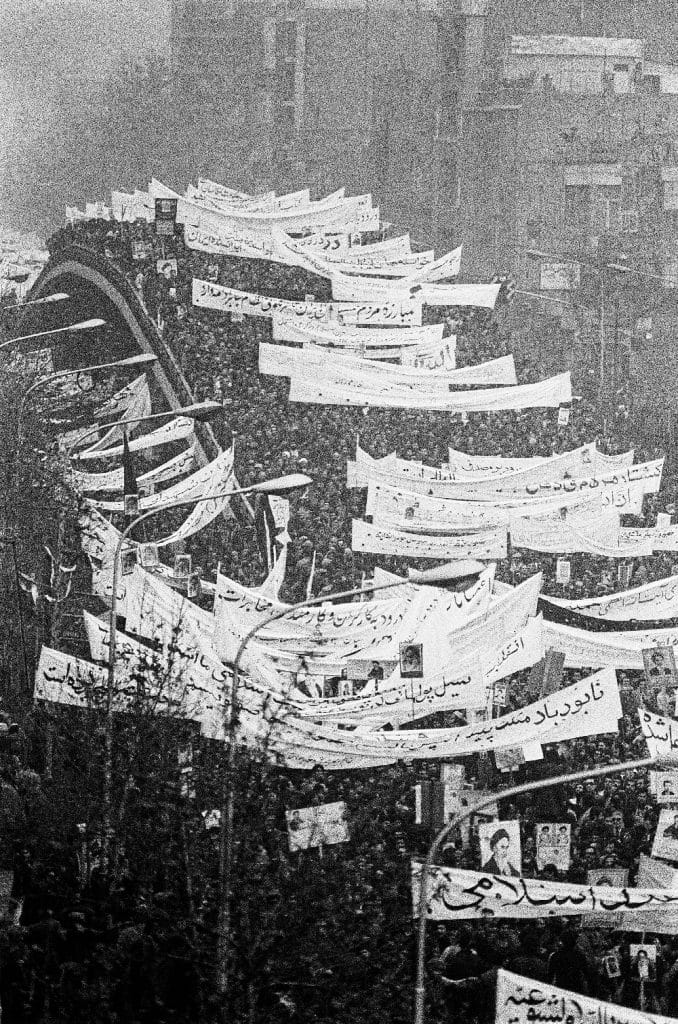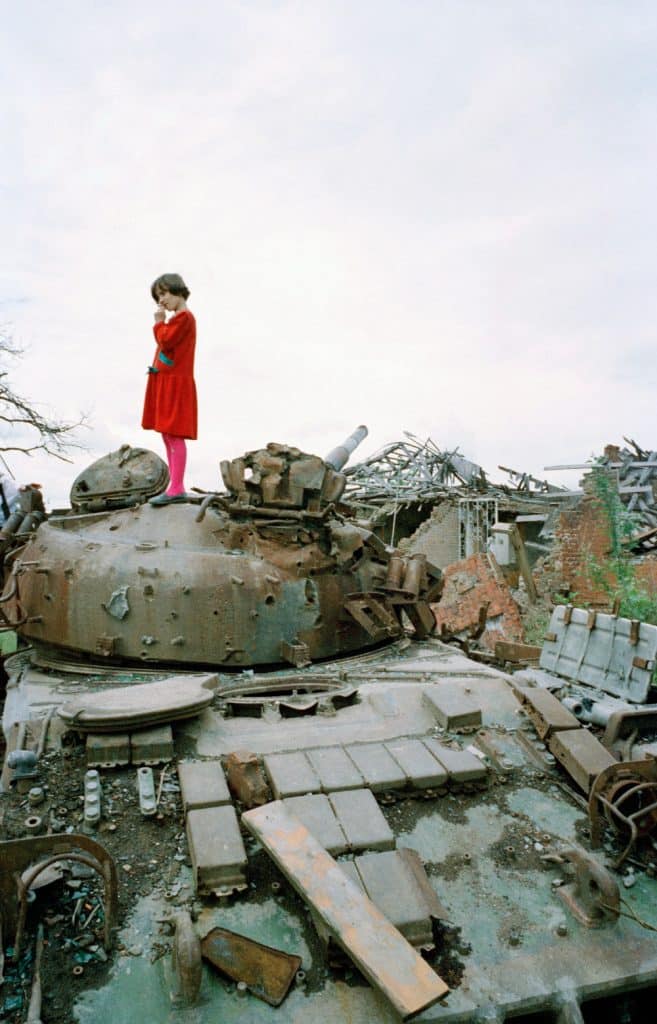Patrick Chauvel opened the door of his Parisian home with gardening gloves on. Appearances were deceptive. Pruning the rosebush, he would take care of that later. The gear for Ukraine was waiting in the corner of the living room. He was leaving the next day. At that moment, the Russian troops had not yet launched their offensive, but he was convinced that the attack was imminent. His photos from the beginning of the conflict would be published in Paris Match a few days later.
In the 50 years of covering conflicts around the world, Patrick Chauvel has never signed a photo book. “An old man’s trick,” he says. This one is his first: an album of the 30 years of Reporters Without Borders, entitled 100 photos for freedom of the press. “The lettering is a little too big; I’m going to be teased,” joked the 72-year-old photojournalist as he looked at the front page with his name written in capital letters. The album goes back over 14 of the 34 conflicts covered by Chauvel. In 100 photos. Needless to say that making choices was difficult task.
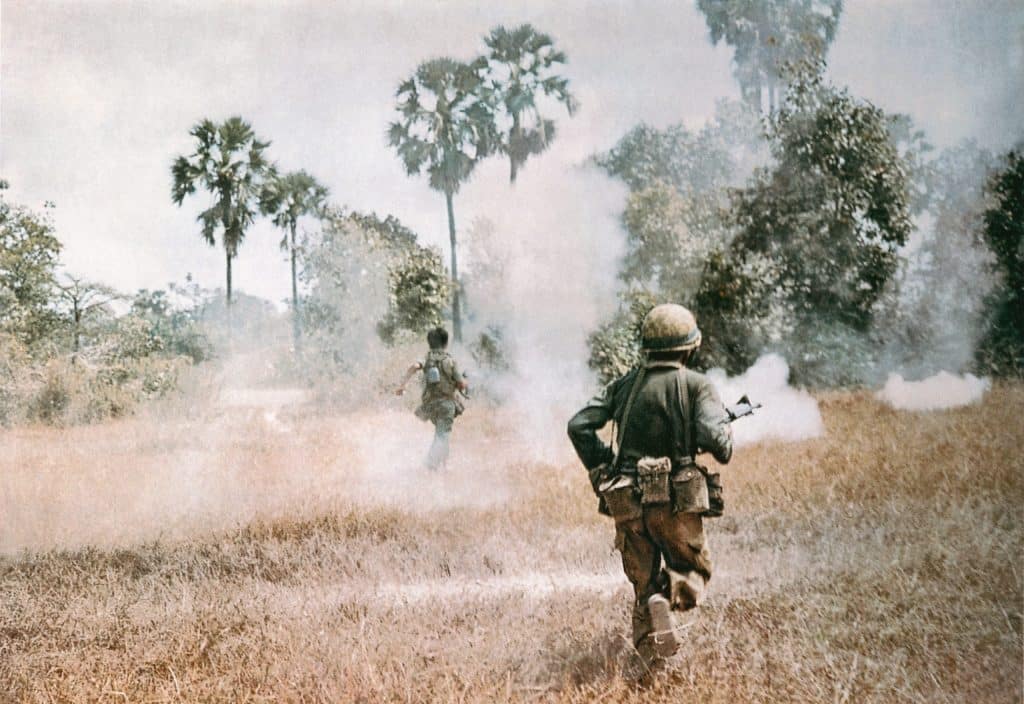
Israel, Vietnam, Cambodia, Northern Ireland, Iran, Lebanon, Panama, Somalia, Afghanistan, Chechnya, Syria, Ukraine… There are a total of 380,000 photos, as close to the fighting as possible, plus four books and hours of documentaries, always with the fierce desire to be the voice of the anonymous people who make history. A priesthood that costs him nearly a dozen serious injuries: M16 shots, mortar shells or heavy artillery… And yet he returns, still today, to bear witness amid the chaos.
“Photography is the pretext that I found to go to the field”
A helmet brought back from Vietnam, a collection of engraved Zippos, some ammunition, a disemboweled camera that saved his life in Lebanon in 1982, the books of his colleagues, five or six framed photos… The Parisian office of the adventure photographer is a small museum. Each object bears witness to half a century of covering world tragedies.
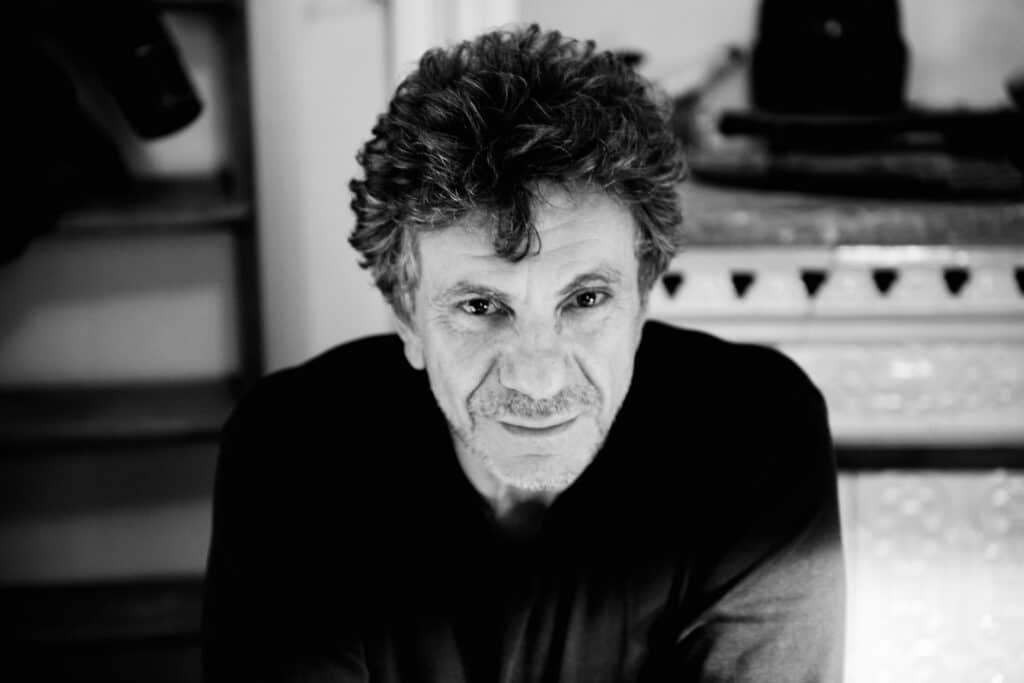
In the beginning, there was fertile ground—the kind that breathes life into reportage, of encountering the clatter of great history. Patrick Chauvel was five years old when his diplomat grandfather, Jean Chauvel, signed the Geneva agreements with French prime minister Pierre Mendès France in front of the gates of the Palais des Nations. His father, Jean-François Chauvel, was a great reporter for the Figaro. “I used to cut out his articles of the day. There was a photo of him with his pipe, under which was written: ‘Hell in Yemen’,” he recounts before reading the end of the text. “We arrived at a corner, the ravine was on the right. We were on a tiny track on the side of the mountain. I heard a blast from the other side. The fighter loaded his gun. He was sweating… See you tomorrow. The reports were in the form of a series; we would jump to the next day’s paper.”
Every Sunday, history would come to his door. Joseph Kessel, the filmmaker Pierre Schoendoerffer, who became his uncle, Gilles Caron or even the Albert Londres prize winner Jean Lartéguy, came to the Chauvel’s table to tell their stories. “It was as if I had Hemingway next to me. I was dreaming awake. These guys knew how to tell stories; Kessel especially, he was a giant. I Sometimes slept at his place. He would wake me up by throwing books in my face, saying, “read this, you moron,” said Patrick Chauvel gayly. Him, being the youngest, also wanted to show that he had a place at that table of great adventurers.
“I wanted to be stronger than them, braver than them. I especially wanted to know if I had the courage”. One evening in 1967, Chauvel told Caron that he would like to do what he did. “Go for it,” he said. And so, the 17-year-old Chauvel with a Leica M3 around his neck lent by the photographer, 500 dollars in his pocket, and five black and white films headed for Israel. “Photography is important to me now; you end up loving it. But at the beginning, I didn’t care; it was the pretext I had found to go to the field. I was rather problematic in terms of writing; I made 2,000 mistakes per page; therefore, I chose photography.” Forty-eight hours after his arrival, the Six-Day War brakes out. A stroke of luck. That’s it, he was there. “All of a sudden, you see people dying, and others asking you to tell their story. So you set up your camera: “aperture f/2.8, 200 mm, wait…”. On that first job, he missed most of the picture. One of the few successful ones was a photo of him in front of the Wailing Wall (Western Wall) taken by an Israeli soldier. He still laughs about it.
Pictures of Bardot in Vietnam
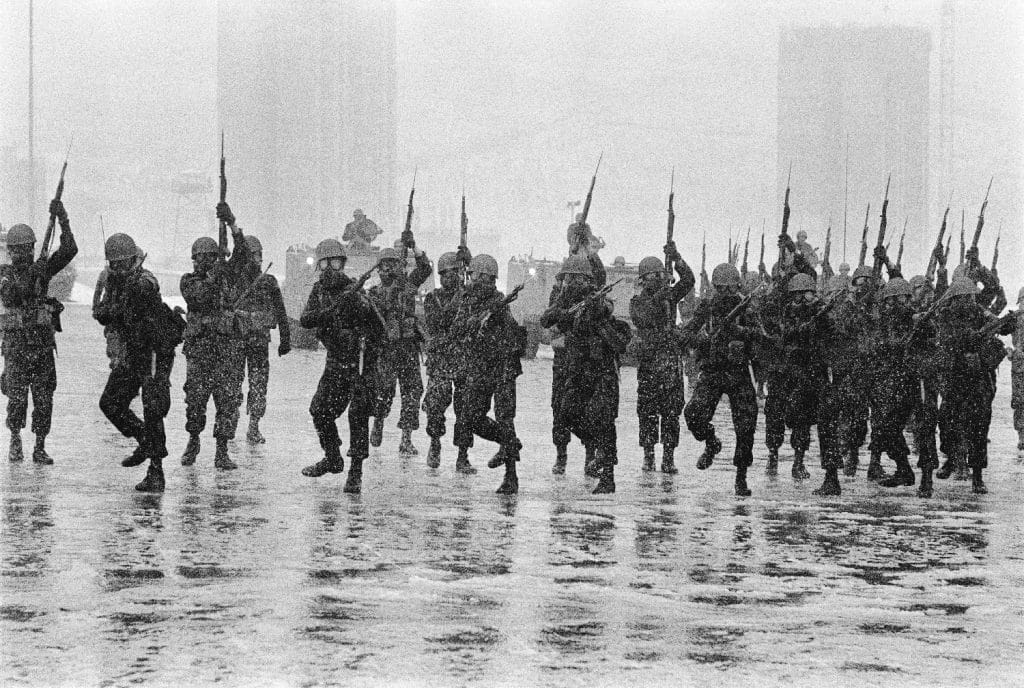
The focusing issue, he would deal with later. The essential things were elsewhere. “I realized that I loved it. I saw some guys were flinching while I kept going further.” Chauvel began his apprenticeship at the newspaper France Soir. “That was a perfect school.” Locked up in a closet organizing the films of the newspaper’s photographers, he educated his eyes. “And then I was allowed to do the contact sheets. That’s when I learned to recognize a good photo. »
In the meantime, he became the people’s section image hunter: Les Potins de la commère (Neighborhood busybody), run by Carmen Tessier. He was sent to take pictures of Parisian parties, shots of Bardot, Nicoletta, Depardieu… showbiz paid well, but it was the war that he got a kick out of. A twist or call of fate, an argument with Roman Polanski got the better of his glittering career. Pierre Lazareff, the boss of France Soir, summoned him to his office. “He fired me but still gave me money because he believed in me,” says Chauvel. Lazareff advises him to go to Vietnam. Yes, sir!
1968. The 18-year-old photojournalist with a Jackson Five haircut and bell-bottom trousers landed in green hell. He took with him his medical kit and his lucky star. “The guys appreciated that you had good shoes, your sleeping bag, your tent, your knife, your food, your water. Plus, good luck and a good medicine kit.” That is where he met with the profession’s greats: Larry Burrows, Catherine Leroy. Afterward, Don McCullin, Noël Quidu, Etienne Montès and many others would follow. A romantic friendship with Sky Eyes, an Apache enlisted in the “Lurps,” the American reconnaissance patrols, was also born in that jungle. Sky, a book written by Chauvel, tells the story. “The encounters. That’s why we do this job. We’re here to talk about others through photos or texts”. He moves about in all conflicts, tirelessly, sporting his boots and camera-in-hand. Sometimes as a freelancer, sometimes for Sipa, later Sygma, agency. “At first, I couldn’t believe that someone would pay my plane ticket for me to do what I love,” he said with amazement.
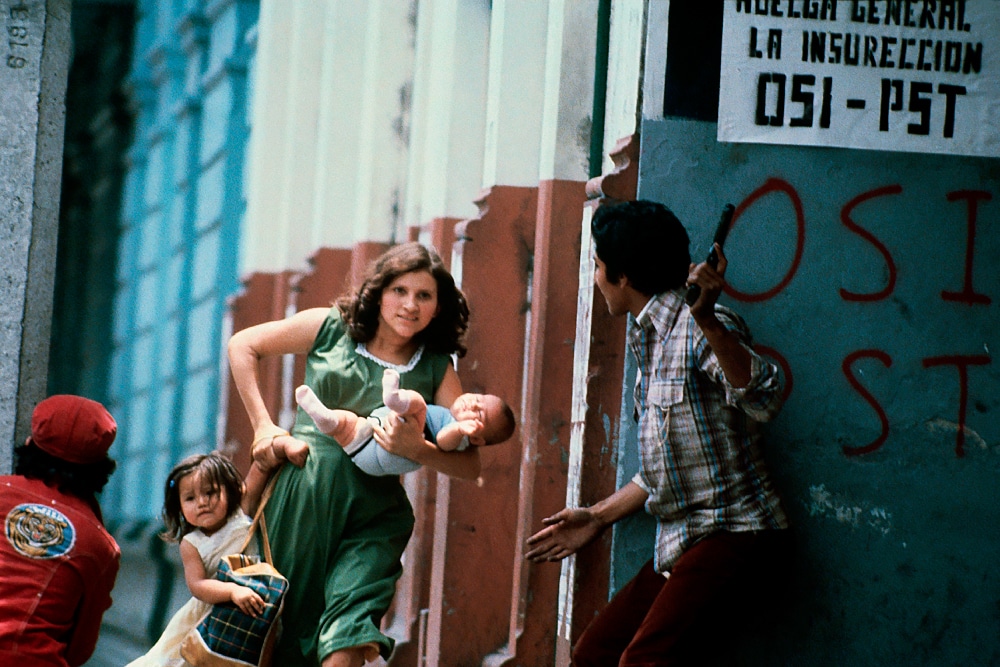
“When the photograph is too beautiful, you lose credibility as a witness”
Chauvel’s photos are raw, in the blur of the action. Frontal. He is the kind of person who goes to the barricades, camera in the clear. He has fun with it. “People often said, “Chauvel takes the picture and then checks the light.” Images and dates scroll by in the 30-years album of Reporters Without Frontiers. Explosions are followed by bursts of gunfire, empty gazes, the scars of war on children’s faces, the silence of the dead. Chauvel has never tried to give aestheticism to his pictures. He fights it. “When the photo is too beautiful, you lose credibility as a witness. In war photography, some brutality must be shown.” Moreover, he does not classify himself as a photojournalist “like James Nachtwey, Luc Delahaye or Gilles Peress,” but rather a journalist who takes pictures; a combat journalist, operating under fire, on the front line, as close as possible. Sometimes too close, as in Cambodia in 1974 when he covered an assault by Cambodian soldiers with bayonets, attacking the Khmer Rouge. That resulted in a famous photograph, taken by his American colleague, of him with his curly hair and a blank stare carried by two men after being hit by shrapnel (an image that became the front page of the first Reporters Without Borders album). In his office, he showed another photo of the assault. He is lying down, head in the soil; the explosion had just thrown him to the ground: “Pierre Schoendoerffer said to me, ‘that, is much too close.'”
Chechnya and Ukraine, a sort of déjà-vu
In this profession, or the extreme form of reporting, not having luck is a professional mistake. Several times, death was not on Chauvel’s side. He survived severe injuries and heavy operations. But what about his head? How do you handle this infernal spiral, this gap between the murderous madness of war and the peaceful world? How do you avoid spinning out of control when you go from one to the other in just a few hours? Welcome to absurdity. “When I was 20, I wasn’t very social,” he admitted. “I was constantly getting into fights in Paris; I couldn’t stand people having fun while others were dying in Vietnam. I ended up in prison for four months. It was justice that saved me.” The post-traumatic stress diluted over time; when he found meaning in it all. “When you go back to the field and they thank you for telling what you saw, you feel like you’re serving a purpose. From the moment you tell yourself that you told the story of that Iraqi or Syrian and you made the French understand what was going on over there, it balances out.”
Now in Ukraine, Patrick Chauvel faces a sort of déjà vu. He was first confronted with the Russian army in Grozny during the first Chechen war (1994-1996). In the heart of the frozen chaos and its 100,000 dead. “It was terrifying; I had never seen such a thing. I realized that I had only covered small wars. There, it was the Russian army, 90% of the city destroyed in six days, continuously rolling, day and night.” A hell of fire and ice. He has a photo from 1996 framed in his office of a little girl from Grozny, wearing tiny slippers, pink tights and a red dress. She is standing on a destroyed Russian tank, already covered in rust. “That was a moment of calm. As soon as the fighting stopped, people got out in their best clothes because they were tired of being in their cellars. And there she was, on that Russian tank, looking like Little Red Riding Hood. I could not resist taking that picture.” We are now witnessing that face in the crowded trains carrying Ukrainian refugees, convoys of the last chance. History rambles.
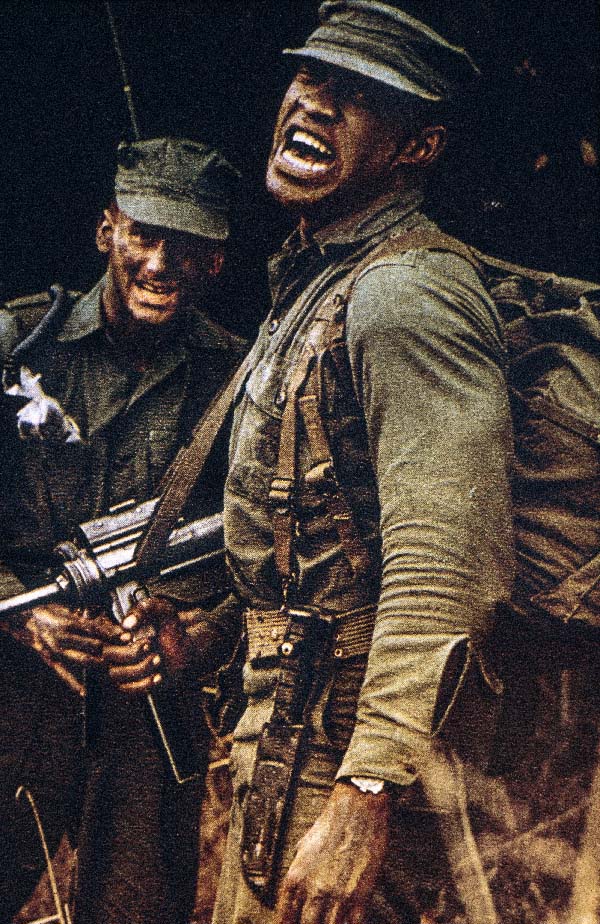
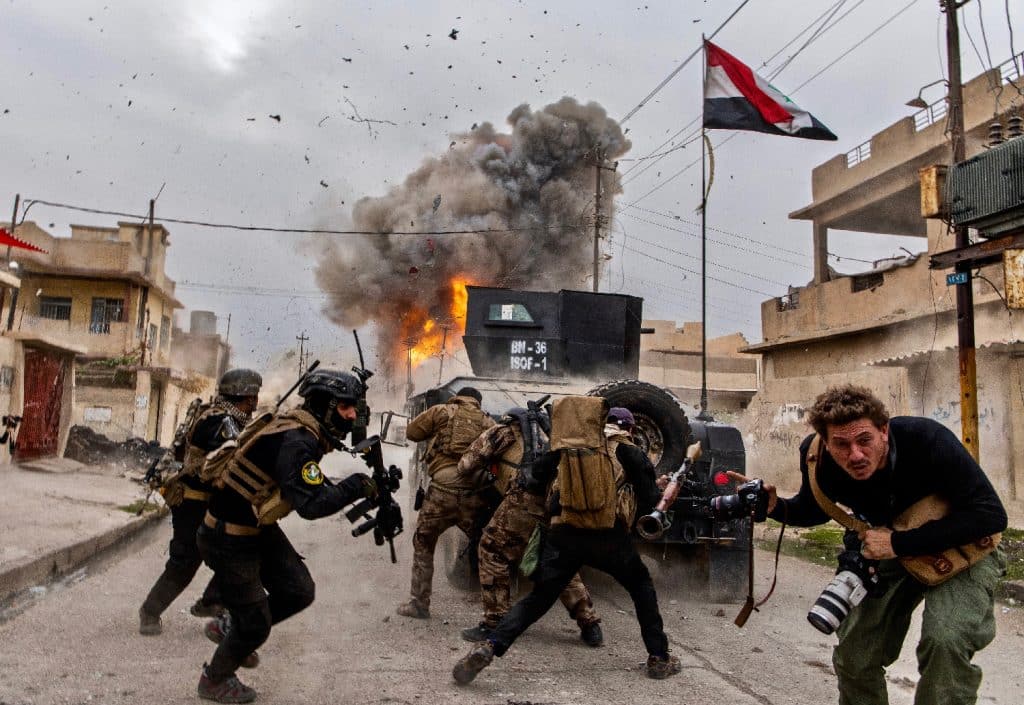
When there is horror, one clings to comrades. “We’re not well paid, but we have such fun,” said Chauvel to his colleague Hervé Merliac after a bombing in Beirut in 1978. Enjoying evacuation. “It was our way of dealing with what we had seen.” That shot in Beirut in 1984 is also framed. Clac! Chauvel’s lens has also captured a fleeing cat, in long strides, in front of a Christian Lebanese army tank opening fire on Muslim militias. “A cat of undetermined religion fleeing the combat,” said the caption. Part of the photographer’s British humor, no doubt. He does not take himself seriously but does his job in all seriousness.
“No one reads the press anymore; everyone looks at social networks”
Today the profession has evolved. Digital technology has erased some of the romanticism of the profession. The download bar has replaced the film envelope given to an illustrious stranger, hoping that it will one day end up on the editorial desk. “Sometimes we would lose three days a week trying to find a way to get them out,” recalls Chauvel. “I remember the nights I would bite my nails until they bled, waiting for the call from the agency or the telex that confirmed the films had arrived.”
Today, three clicks, a little connection, and news from the front are instantaneous. No more lab either. That has become the photographer’s role. “Before we would send in the films and the agency would select 25 images. In the evening we were all at the bar. Today you are the editor yourself. We do the lab work in our room and there are not many people left to get a drink with.” Chauvel does not play the role of “the old fart.” He readily admits that the new cameras make the job easier. He likes to repeat his formula: “You throw your camera in the air and you get a double page in Match.”
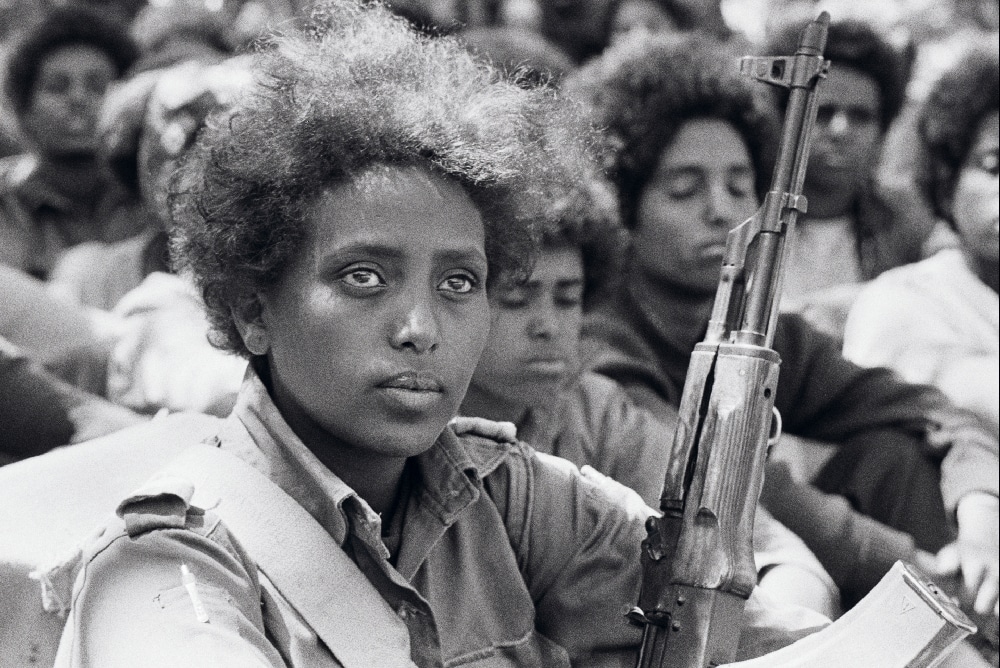
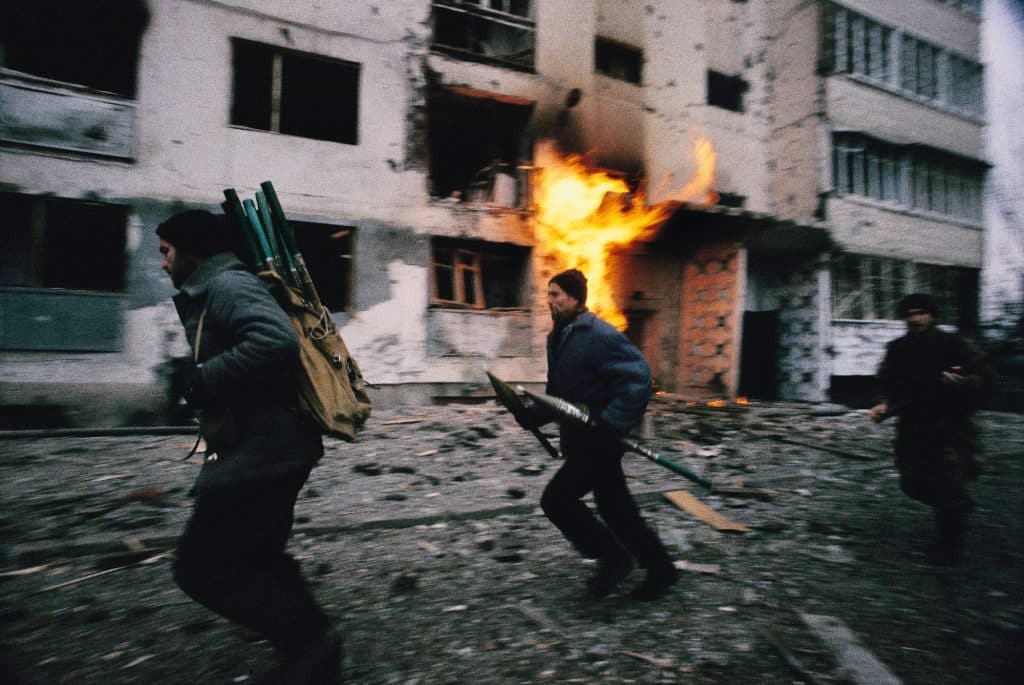
He who has known the hardships and frustrations of combat at dusk or in the jungle no longer cares about technique but only about the frame. “When the going gets tough, I focus on the action.” Also, he no longer needs to count his shots. “That allows me to take pictures for myself too. When I look at my photos of Vietnam, I have almost none of Saigon. It was like a movie with rickshaws, American cars… I really regret that.”
With two shots for a week of reporting in the jungle, there is no more room for leisurely snapping. Images are scarce. Patrick passed that on to his son Antoine who has also taken the job. It runs in the family. In a joint story they did in Iraq, the father taught the son to be wary of the immediacy of the image, to know when to pause and not publish certain shots. And the son showed him that files can be compressed and photos can be sent faster—each his own generation.
In Ukraine, the conflict is also a war of images, a continuous bombardment, trivialization of violence, and unverifiable sources. “No one reads the press anymore; everyone looks at social networks,” said the photographer sadly. A few days before, his colleague Eric Bouvet had pointed out the quest for the ever more spectacular photo. “There are many journalists there. We have passed a milestone. There is a form of one-upmanship where we seek to have more, to have the “scoop,” disregarding the danger.” Often, one photo is enough. The one that sums up the situation. There is no need for more. “Too many images kill the image,” Chauvel recently reiterated in a TV program.
A photo fund for the duty of memory
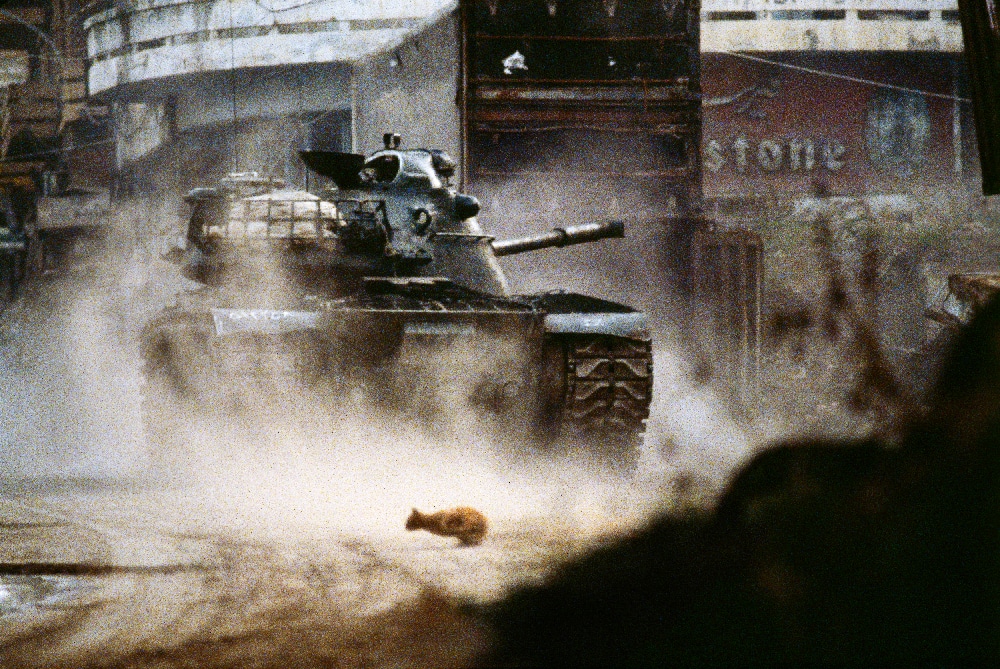
Photograph everything but do not show everything. Not right away. The photos that Patrick Chauvel did not publish serve as memory, as historical evidence. In 2014, Swiss patrons suggested he create the Patrick Chauvel Fund. “It’s an old man’s trick to take care of the archives,” he said. “I want to keep going. This heritage is bigger than me; it escapes me. All those people, those faces, it is half a century of history.” A whole team, including his companion Anna Pitoun, is working hard to gather and bring his archive to life: 380,000 photos, 1,000 hours of film, texts, press cards, passports… It is a testimony to the duty of memory and the history of peoples that now has its permanent exhibition at the Caen Memorial.
Patrick Chauvel intends to add to this collection with reportage that he has not yet done – such as following the Foreign Legion. This Reporters Without Borders album is, in any case, a beautiful witness work, with texts by photographers like Don McCullin, James Nachtwey, or journalists Rémy Ourdan and Adrien Jaulmes. It is a plea to recall the necessity of the profession of war reporting, to continue to question, to raise awareness, “so we never again hear: ‘we didn’t know.’”
Patrick Chauvel, 100 photos for the freedom of the press, 9.90€, on sale in bookstores and newsstands or on www.rsf.org. 100% of the profits are donated to Reporters Without Borders.

